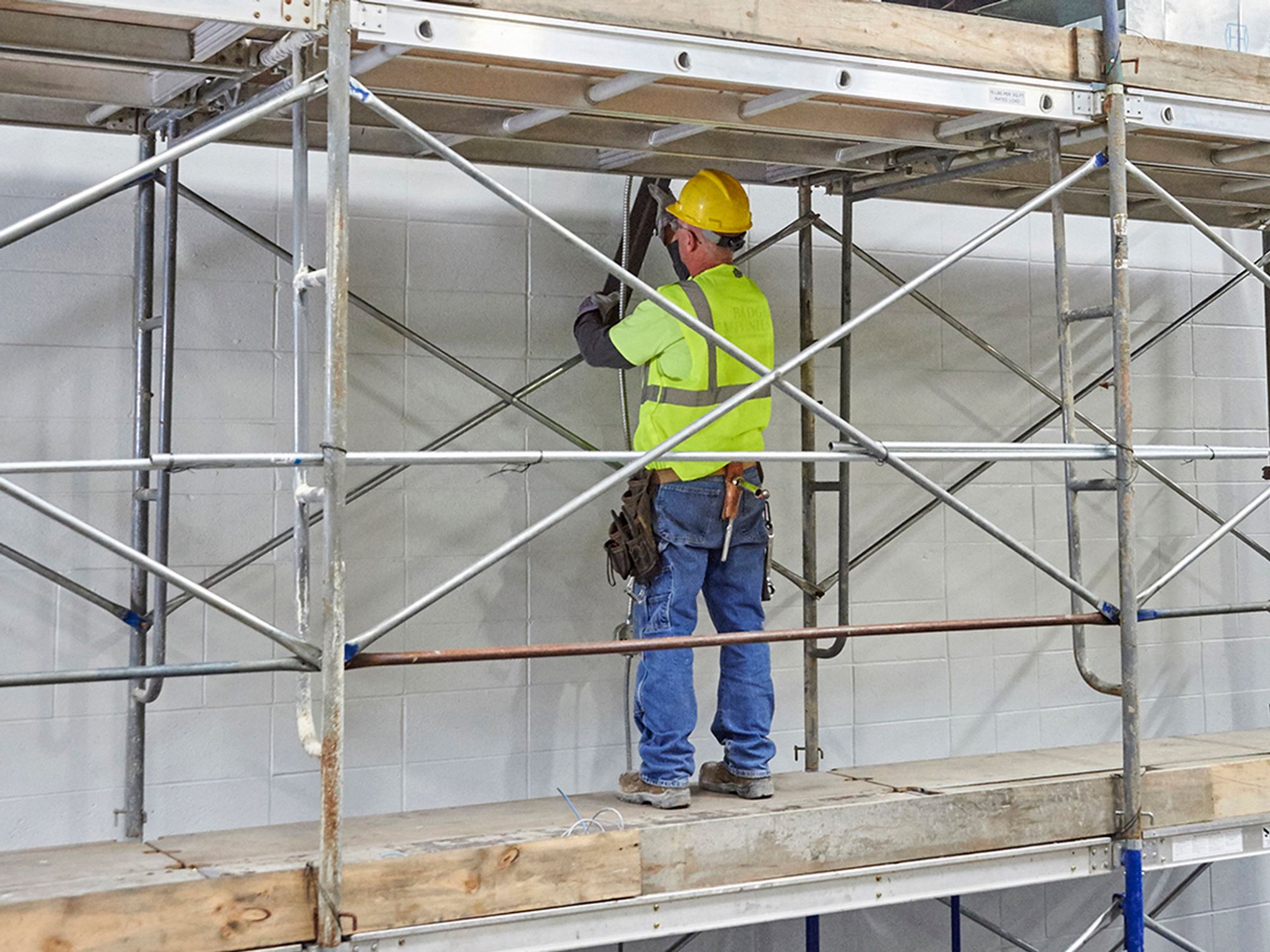Scaffolding in general industry and construction

- All employers who use scaffolds in construction work or production processes must comply with OSHA’s scaffolding standard, 29 CFR 1926 Subpart L.
- The standard specifies how employers must minimize employee risk by providing properly constructed scaffolds, fall protection, and training.
The Occupational Safety & Health Association’s (OSHA) 29 CFR Subpart L standard sets performance-based criteria to protect employees from scaffold-related hazards such as falls, falling objects, structural instability, electrocution, and overloading. It also addresses training and various types of scaffolds, as well as falling object protection, ladders, weather conditions, aerial lifts, and stilts.
Scope/Who must comply
All employers performing construction work with scaffolds and general industry employers who use scaffolds in their production processes must comply. OSHA regulates scaffolding at 29 CFR 1926 Subpart L, 1926.450 through 1926.454 — Scaffolding.
Basic requirements
OSHA’s scaffolding standard has several key provisions that employers must follow:
- Protect each employee more than 10 feet above a lower level from falls using guardrails or a fall arrest system, except those on single-point and two-point adjustable suspension scaffolds. Each employee on a single-point and two-point adjustable suspended scaffold must be protected by both a personal fall arrest system and a guardrail.
- Ensure that the height of the top rail for scaffolds manufactured and placed in service after January 1, 2000, is between 38 and 45 inches. For scaffolds manufactured and placed in service before January 1, 2000, the height of the top rail can be between 36 and 45 inches.
- Make sure that cross bracing used as a top rail is between 38 and 48 inches above the work platform.
- Install mid rails approximately halfway between the top rail and the platform surface. When a crosspoint of cross bracing is used as a mid-rail, it must be between 20 and 30 inches above the work platform.
- Ensure that support scaffold footings are level and capable of supporting the loaded scaffold. The legs, poles, frames, and uprights must bear on baseplates and mud sills.
- Fully plank or deck supported scaffold platforms.
- Restrain supported scaffolds (with a height-to-base of more than 4:1) from tipping by guying, tying, bracing, or the equivalent.
- Ensure that scaffolds and scaffold components support at least four times the maximum intended load. Suspension scaffold rigging must support at least six times the intended load.
- Train each employee who works on a scaffold on the hazards and the procedures to control the hazards.
- Make sure a competent person inspects the scaffold and scaffold components for visible defects before each work shift (and after any occurrence that could affect structural integrity).
- Have a qualified person design and load scaffolds in accordance with the design.
- Have a registered professional engineer design specific types of scaffolds.
- When erecting and dismantling supported scaffolds, a competent person must determine the feasibility of providing a safe means of access and fall protection for these operations.
Training
All employees must be trained by a qualified person to recognize the hazards associated with the type of scaffold being used and how to control or minimize those hazards. The training must include the following:
- Fall hazards,
- Falling object hazards,
- Electrical hazards,
- Proper use of the scaffold, and
- Handling of materials.
